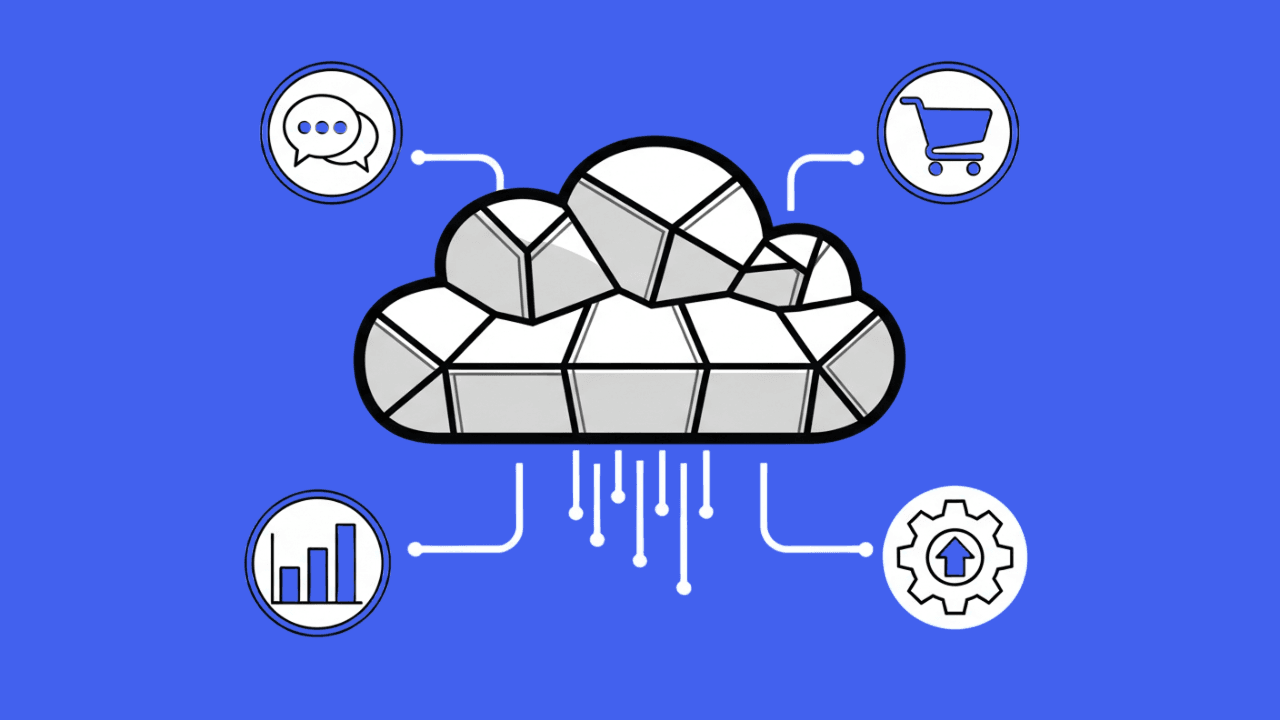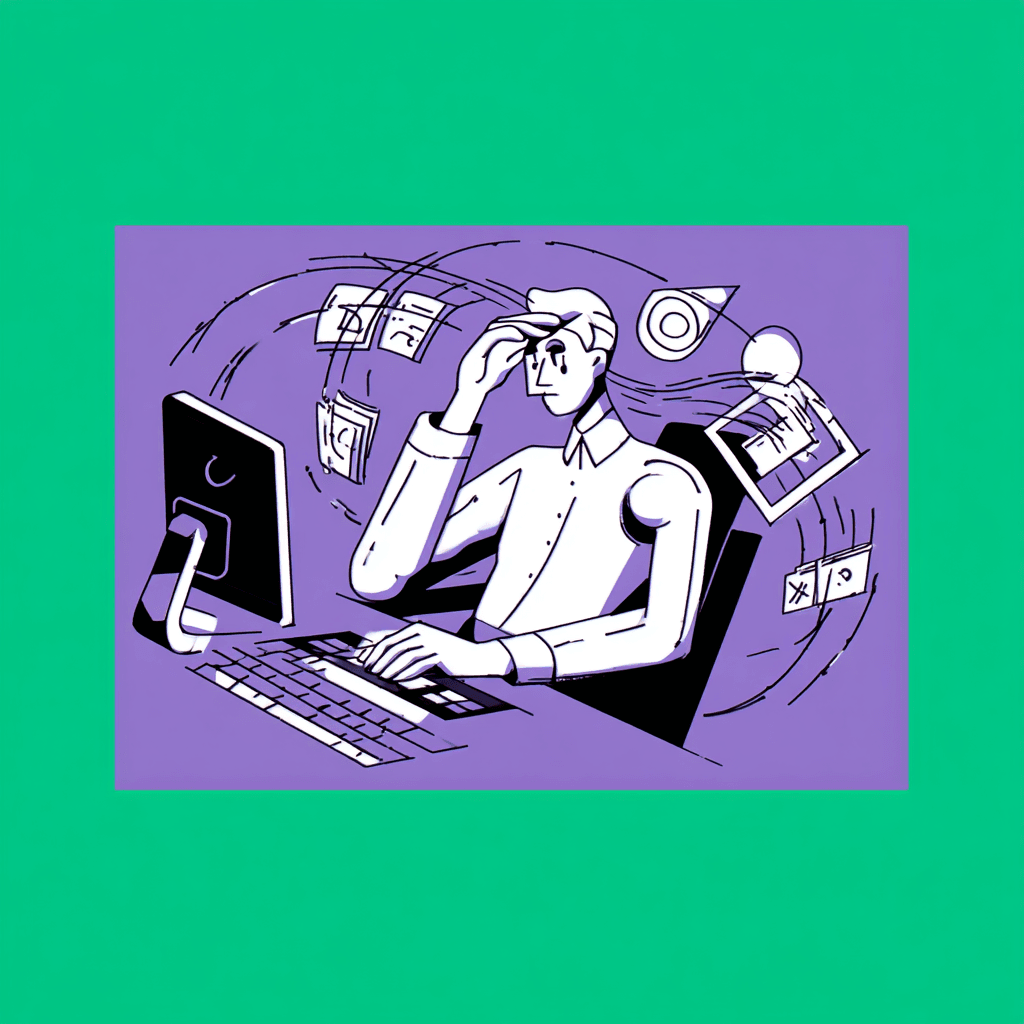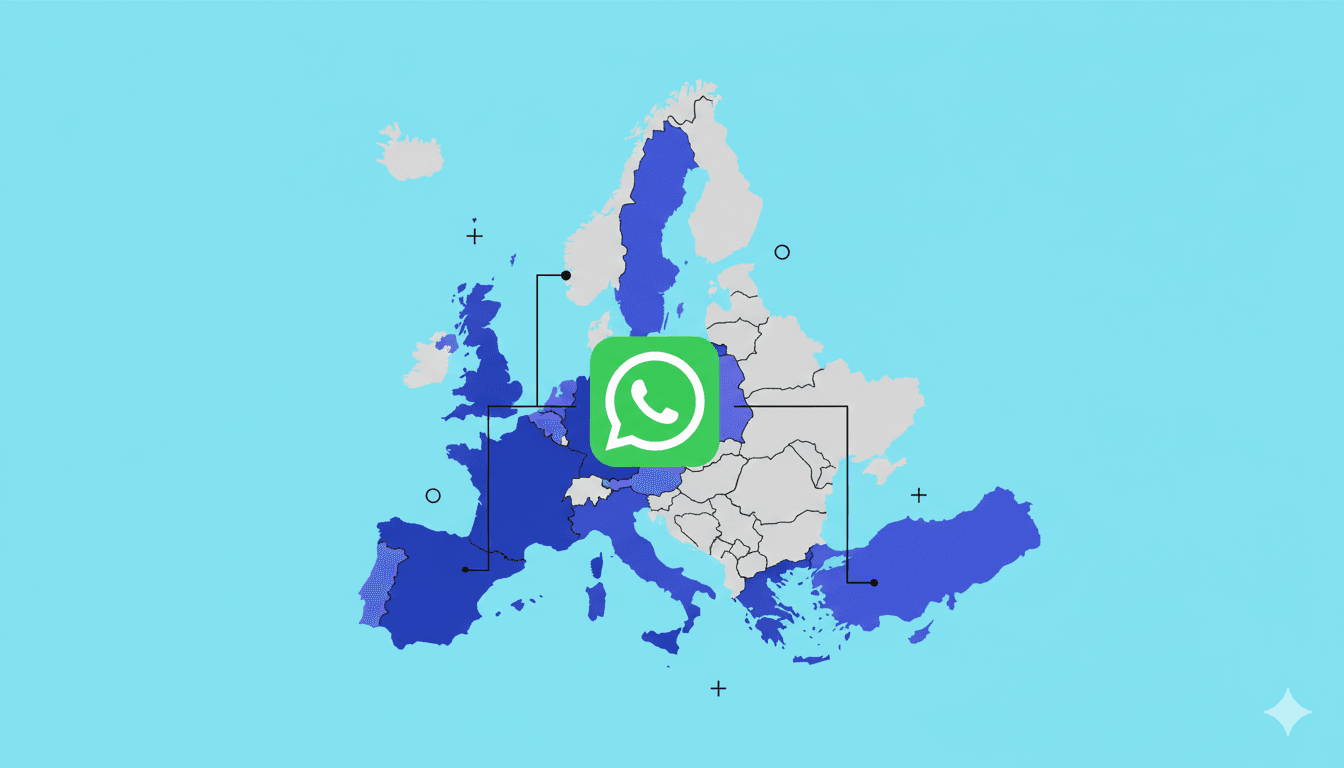In dynamic e-commerce, efficiently managing returns is not a “nice-to-have” — it’s a central success factor. Modern returns management software enables brands and retailers to sustainably optimize the entire returns process, reduce costs, and build long-term customer loyalty. In this guide, you’ll learn how returns solutions work, which features they offer — and why a data-driven, AI-powered approach will make the difference in the future.
Why is returns management software indispensable for e-commerce systems?
Practical problems without software — and how a smart solution helps
High return rates, process chaos, faulty refunds, and impatient customers are a reality in every growing online business. Especially in sectors like fashion or electronics, return rates easily reach 30–50%. Those who work manually with Excel, isolated tools, or manual service processes risk rising costs, dissatisfaction, and loss of control — an enormous burden for store operators and customer support teams alike.
Returns management software serves here as a central solution:
- Cross-platform control of returns (shop, marketplace, POS, etc.)
- Automated return label creation and real-time status updates
- Efficient workflows — from return registration to credit note
- Data-driven insights into return reasons and product performance
Sustainability as an additional success factor
Beyond efficiency and cost control, sustainability is gaining importance: digital return portals reduce paper usage, consolidated logistics shorten transport routes, and AI-driven data analyses help identify problematic items and reduce returns in the long term. This saves resources, reduces CO₂, and simultaneously increases customer satisfaction.
The effects: efficiency, lower costs, happier customers
The greatest lever of modern returns solutions is the combination of increased efficiency, cost reduction, and customer satisfaction. With an intuitive returns portal, every return is handled quickly, transparently, and without media disruptions. Automated processes prevent errors, relieve support teams, and drastically shorten the processing time per case.
Key advantages at a glance:
- Automated refunds save manual work and eliminate sources of error.
- AI-powered status updates ensure high transparency for customers.
- Centralized data provides insights into product quality and common return reasons and supports targeted assortment optimization.
This way, every return case turns from a pure cost center into a valuable source for data-driven decisions and stronger customer loyalty.
Core features: what must modern returns management software be able to do?
1. Central returns portal & automated label creation
The returns portal is the entry point for customers and service teams:
- Simple registration via order number, product and return reason selection
- Automatic generation and dispatch of the return label
- Management of various return options, country rules, and carriers
- Immediate status communication: “Goods received,” “Refund initiated,” etc.
Automation reduces processing time to a minimum, eliminates errors in addressing or assignment, and gives the customer a positive, seamless returns experience.
2. Deep data integration: ERP, inventory management, shop systems
The key to efficient returns processing is the direct integration of the software into ERP, inventory management, and shop platforms (e.g., Shopify, WooCommerce, Shopware):
- Real-time synchronization of item, customer, return, and inventory data
- Central control of automatic credit notes, postings, and goods receipt checks
- All data is available to service, purchasing, and controlling — no double entries, full transparency
Integration ensures immediate information and actionability: every process is traceable, error-prone standalone solutions become obsolete.
3. AI & automation: smart refunds and customer communication
Artificial intelligence is revolutionizing the handling of returns:
- AI checks return registrations, reconciles data, and controls refunds based on defined rules
- Automatic status updates via email or WhatsApp drastically reduce inquiries
- Recurring support issues (e.g., “Where is my money?”) are answered automatically, only special cases go to human support
The result: less manual work, lightning-fast processing, and a significantly better customer experience.
Chatarmin: As an AI-first suite, Chatarmin brings this automation deep into operations, integrates WhatsApp ticketing system, and uses data-driven insights for continuous process improvement.
4. Interfaces & compliance: GDPR, right of withdrawal, international requirements
Compliance with legal requirements is central:
- GDPR-compliant storage, processing, and deletion of all return and customer data
- Audit-proof documentation of all processes (including withdrawal, status update, payout, etc.)
- Configuration of country-specific processes for international returns
- Integration ensures legally compliant automation, avoids media disruptions, and protects sensitive customer data
Comparison: ArminCX vs. classic returns solutions (Sendcloud, Outvio, Remira)
| Provider | Channels | Special features | AI & customer service | Price/performance factor | Ideal for | Score (1–5) |
|---|---|---|---|---|---|---|
| Chatarmin / ArminCX | Shop, WhatsApp, CRM, Social | AI-first CX suite, omnichannel inbox, WhatsApp support, automated workflows | Strong AI automation, context-based | Very high | E-commerce focused on customer experience & revenue | 5.0 |
| COSYS | ERP, logistics, barcode | Mobile data capture, warehouse management, transport tracking | Functional, but little personalization | Good | Logistics companies & warehouse operations | 3.2 |
| Remira | ERP, shop, logistics | Supply chain management, process handling, ERP integration | Basic support, focus on processes | High | Wholesalers & companies with supply chains | 3.8 |
| BlueYonder | Supply chain, AI planning | Forecast tools, inventory optimization, predictive analytics | Strong AI for forecasts, little end-customer focus | High | International corporations, SCM | 4.3 |
Scoring logic (legend)
1. Channels (0.5–1.0 points)
- The more relevant customer touchpoints covered, the higher the score.
- ArminCX (1.0) covers shop, CRM, social & WhatsApp → maximum points.
- COSYS is more logistics-internal → lower.
2. Special features (0.5–1.0 points)
- Degree of innovation & added value of features.
- AI-first & omnichannel (ArminCX) = 1.0
- Classic ERP functions (COSYS/Remira) = 0.6–0.8
3. AI & customer service (0.5–1.5 points)
- Focus on automation, context sensitivity & customer centricity.
- ArminCX (1.5) very strong → personalized communication.
- BlueYonder (1.2) more forecast-optimized, less end-customer.
- COSYS (0.5) hardly any AI.
4. Price/performance factor (0.5–1.0 points)
- Relation between feature scope and cost structure.
- ArminCX (1.0) very high due to revenue-growth focus.
- COSYS (0.7) solid but less differentiated.
- Remira & BlueYonder (0.9) strong but pricier enterprise solutions.
5. Target group fit / ideal for (0.5–1.0 points)
- Fit to the addressed market.
- ArminCX (1.0) → fast-growing e-commerce.
- BlueYonder (0.9) → international corporations.
- COSYS (0.6) → more of a niche.
ArminCX (Chatarmin)
Strengths:
- Focus on AI-powered customer communication (AI-first CX suite)
- Omnichannel inbox (shop, WhatsApp, CRM, social)
- Automated workflows with strong personalization
- Clear focus on revenue growth through better customer dialogue
Weaknesses:
- Very high price/performance factor, therefore more suitable for larger shops
- Less focus on classic returns logistics, more on CX
Ratings:
- G2 — rated very positively in the customer experience category
- Capterra — good marks for ease of use and support
- OMR Reviews — particularly strong ratings for WhatsApp support
COSYS
Strengths:
- Mobile data capture, barcode scanning, and transport tracking
- Strong ERP and logistics integration
- Well-suited for warehouse management & supply chain
Weaknesses:
- Few personalized customer experience features
- Clear focus on functionality, less on end-customer communication
Ratings:
- G2 — solid ratings in the logistics area
- Capterra — positive feedback for reliability
- Hardly represented on OMR
Remira
Strengths:
- Supply chain management with strong ERP integration
- Ideal for wholesalers & companies with complex supply chains
- Supports process optimization in warehousing & logistics
Weaknesses:
- Less innovative AI features
- Primarily focused on processes, less on customer service
Ratings:
- G2 — average ratings, strengths in ERP integration
- Capterra — positive feedback for process handling
- Hardly any OMR reviews
BlueYonder
Strengths:
- Leading in AI-powered forecasting & predictive analytics
- Optimization of inventory & supply chains
- Strong international orientation
Weaknesses:
- Little focus on end-customer communication
- High cost factor, more suitable for corporations
Ratings:
- G2 — top ratings for forecasting & analytics
- Capterra — particularly valued for AI planning
- OMR — limited presence
Best practices: how to implement returns management software efficiently
Integration & interface management
- Carefully check which interfaces (shop, ERP, inventory management, CRM) are offered and whether individual requirements (e.g., various sales channels, wholesale, brick-and-mortar) are covered.
- Test the returns portal as a customer: how intuitive is it? How fast is the process, really?
- Ensure real-time capability — only then will you benefit from automated, synchronized workflows across the entire ecosystem.
Step-by-step implementation
- Activate shop integration (e.g., Shopify, WooCommerce, Shopware)
- Set up ERP & CRM connections for data reconciliation and customer transparency
- Configure automated label & status processes for smooth operations
- Enable customer communication via WhatsApp, email & portal for real-time updates
- Ensure monitoring & optimization with dashboards and live KPIs
Process and customer orientation
- Segment return reasons, product types, and workflows directly in the solution
- Enable premium handling for top customers, automate international shipping options and status communication according to your business model
- Analyze and optimize continuously: a dashboard with live KPIs for return rate, processing times, and problematic items makes this possible
Automate and relieve your support
- Use AI-driven acknowledgments and refunds: routine questions disappear, support can focus on complex cases and building loyalty.
- Integrate WhatsApp/chat ticketing to reach customers on their favorite channel and process everything with seamless documentation.
ROI & benefits: what does automated returns management deliver?
- Time savings: up to 60% lower personnel costs per return thanks to process automation
- Reduced error rate: interfaces and AI eliminate manual errors and duplicate work
- Increased customer satisfaction: customers receive instant answers, status updates, and refunds
- More revenue & loyalty: a positive returns experience is rarely forgotten — and determines loyalty
- Resilience during peak phases: especially during Black Friday or seasonal sales events, automated returns management handles a flood of returns without a support collapse — customers receive fast responses and refunds despite high load.
Conclusion: the future of returns management is automated, integrated & customer-focused
For e-commerce companies in the DACH region, returns management software is a game changer today. It intelligently links efficiency, cost savings, sustainability, and customer experience — turning every return case into a competitive advantage.
With platforms like Chatarmin, managing returns becomes a strategic engine for customer loyalty, process quality, and transparent control. Automated refunds, intelligent status communication, integration of all systems, and full legal compliance provide store operators, wholesalers, and growing brands with what they need in global competition: efficiency, growth, and genuine closeness to the customer.
Ready to turn returns from a cost factor into a growth driver? Then book your non-binding demo with Chatarmin now and see how smart software turns every return process into a customer highlight — personal, automated, and scalable.
Frequently asked questions about returns management software
How quickly can returns management software be introduced?
Depending on complexity and shop/ERP system, implementation can be done in a few days. Solutions like Chatarmin offer guided setups and immediately available interfaces.
Does the software comply with GDPR and other legal requirements?
Yes, leading tools like Chatarmin store and document all process results in a legally compliant and audit-proof manner — including deletion periods and withdrawal workflows.
Can I automate international returns including refunds?
Yes. Smart systems store country-specific requirements and adapt return labels and process triggers to different shipping and legal situations — worldwide.
How do modern systems prevent lost returns?
Automated assignment, barcodes, and seamless digital process documentation ensure that no package disappears in the system — all events are trackable.
What sets Chatarmin apart from other solutions?
Chatarmin is the only AI-first suite that directly links returns management with conversational support, real-time AI, and WhatsApp ticketing — for maximum automation, deep customer insights, and scalable processes.








